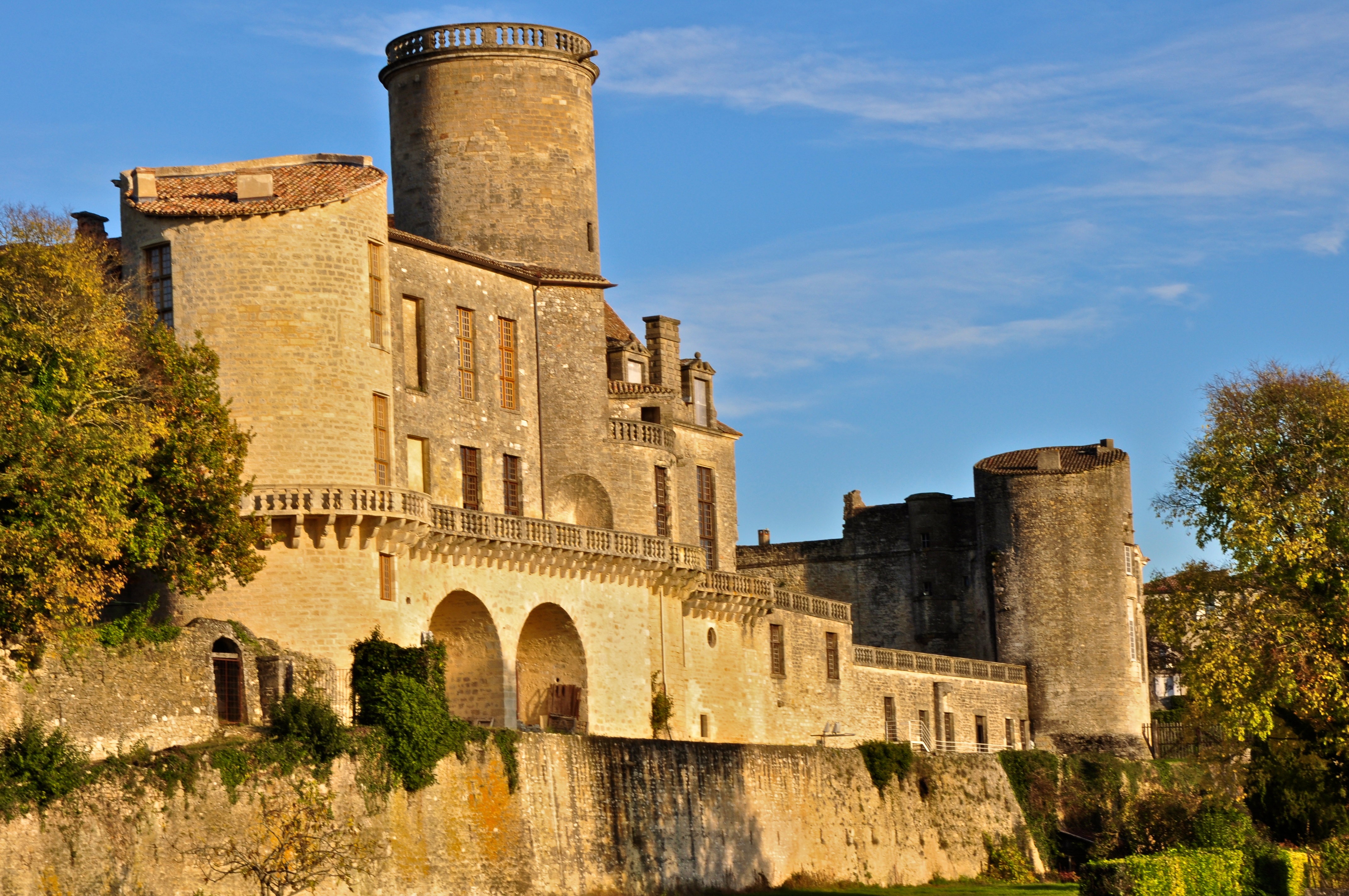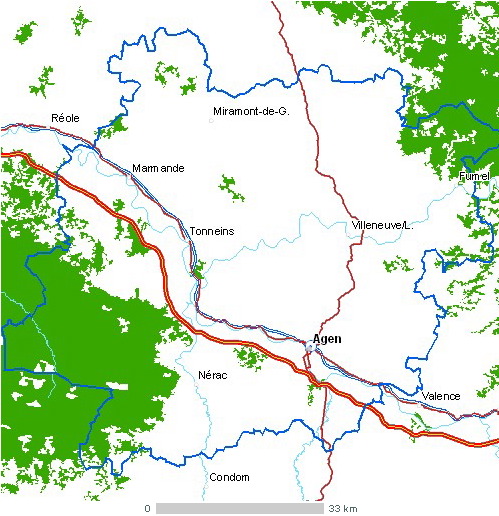|
Château De Duras (France)
Château de Duras is located in the town of Duras, Lot-et-Garonne, Duras, in the department of Lot-et-Garonne, Nouvelle-Aquitaine, France. The castle was classified as a historic monument in 1970. History The origin of the occupation of the site was the church of Saint-Ayrard (now demolished), which was located 1200m from the castle. The church was given in 977 to the Abbey of La Réole by Gombaud, Bishop of Vasconie and Guillaume, Duke of Gascony. In 1087, Bertrand de Taillecavat gave a quarter of the church of Saint-Ayrard to the abbey of La Réole. In 1127 the priory of Saint-Ayrard's villa is destroyed by the Viscount of Besamont. A house and a chapel was then built on the current site of the castle. A charter of 1233 attributed to the prior of La Réole the rights to the city of Duras, as he owned the priory of Saint-Ayrard. The charter is signed by Geraud de Malemort, Archbishop of Bordeaux, Raymond, Bishop of Agen and Guillaume de Bouville, Lord of Duras. The first castle ... [...More Info...] [...Related Items...] OR: [Wikipedia] [Google] [Baidu] |
Duras, Lot-et-Garonne
Duras (; oc, Duràs) is a commune in the Lot-et-Garonne department in south-western France. The town is traversed by the Dropt river. Notable people *David Hume of Godscroft (1558-1629), Scottish historian and philosopher, was the pastor in Duras 1604–1614. *The writer Marguerite Donnadieu (1914–1996) took the pseudonym "Marguerite Duras" in 1943, after this village, where her father's house was located. Sister cities Duras is twinned with the following cities: * Sint-Truiden, Belgium See also *Communes of the Lot-et-Garonne department The following is a list of the 319 communes of the French department of Lot-et-Garonne. The communes cooperate in the following intercommunalities (as of 2022):Communes of Lot-et-G ... [...More Info...] [...Related Items...] OR: [Wikipedia] [Google] [Baidu] |
Lot-et-Garonne
Lot-et-Garonne (, oc, Òlt e Garona) is a department in the Nouvelle-Aquitaine region of Southwestern France. Named after the rivers Lot and Garonne, it had a population of 331,271 in 2019.Populations légales 2019: 47 Lot-et-Garonne INSEE Its and largest city is . History Lot-et-Garonne is one of the original 83 departments created on 4 March 1790, as a result of the ...[...More Info...] [...Related Items...] OR: [Wikipedia] [Google] [Baidu] |
Nouvelle-Aquitaine
Nouvelle-Aquitaine (; oc, Nòva Aquitània or ; eu, Akitania Berria; Poitevin-Saintongeais: ''Novéle-Aguiéne'') is the largest administrative region in France, spanning the west and southwest of the mainland. The region was created by the territorial reform of French regions in 2014 through the merger of three regions: Aquitaine, Limousin and Poitou-Charentes. It covers – or of the country – and has 5,956,978 inhabitants (municipal population on 1 January 2017). The new region was established on 1 January 2016, following the regional elections in December 2015. It is the largest region in France by area (including overseas regions such as French Guiana), with a territory slightly larger than that of Austria. Its prefecture and largest city, Bordeaux, together with its suburbs and satellite cities, forms the seventh-largest metropolitan area of France, with 850,000 inhabitants. The region has 25 major urban areas, among which the most important after Bordeaux are ... [...More Info...] [...Related Items...] OR: [Wikipedia] [Google] [Baidu] |
Henry III Of England
Henry III (1 October 1207 – 16 November 1272), also known as Henry of Winchester, was King of England, Lord of Ireland, and Duke of Aquitaine from 1216 until his death in 1272. The son of King John and Isabella of Angoulême, Henry assumed the throne when he was only nine in the middle of the First Barons' War. Cardinal Guala Bicchieri declared the war against the rebel barons to be a religious crusade and Henry's forces, led by William Marshal, defeated the rebels at the battles of Lincoln and Sandwich in 1217. Henry promised to abide by the Great Charter of 1225, a later version of the 1215 '' Magna Carta'', which limited royal power and protected the rights of the major barons. His early rule was dominated first by Hubert de Burgh and then Peter des Roches, who re-established royal authority after the war. In 1230, the King attempted to reconquer the provinces of France that had once belonged to his father, but the invasion was a debacle. A revolt led by William ... [...More Info...] [...Related Items...] OR: [Wikipedia] [Google] [Baidu] |
Edward I Of England
Edward I (17/18 June 1239 – 7 July 1307), also known as Edward Longshanks and the Hammer of the Scots, was King of England and Lord of Ireland from 1272 to 1307. Concurrently, he ruled the duchies of Aquitaine and Gascony as a vassal of the French king. Before his accession to the throne, he was commonly referred to as the Lord Edward. The eldest son of Henry III, Edward was involved from an early age in the political intrigues of his father's reign, which included a rebellion by the English barons. In 1259, he briefly sided with a baronial reform movement, supporting the Provisions of Oxford. After reconciliation with his father, however, he remained loyal throughout the subsequent armed conflict, known as the Second Barons' War. After the Battle of Lewes, Edward was held hostage by the rebellious barons, but escaped after a few months and defeated the baronial leader Simon de Montfort at the Battle of Evesham in 1265. Within two years the rebellion was extin ... [...More Info...] [...Related Items...] OR: [Wikipedia] [Google] [Baidu] |


